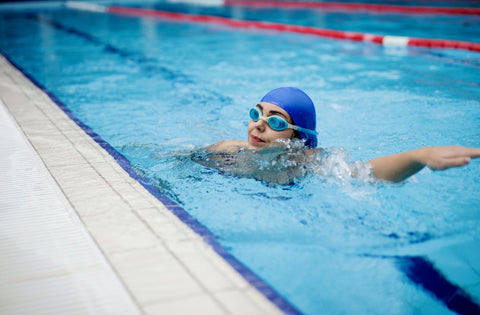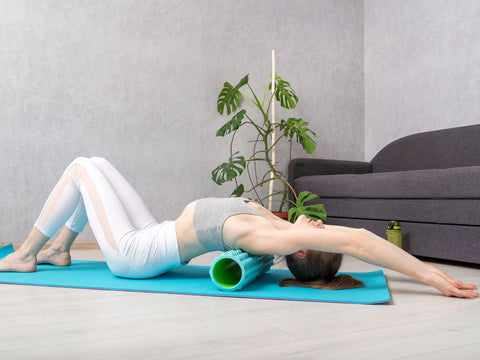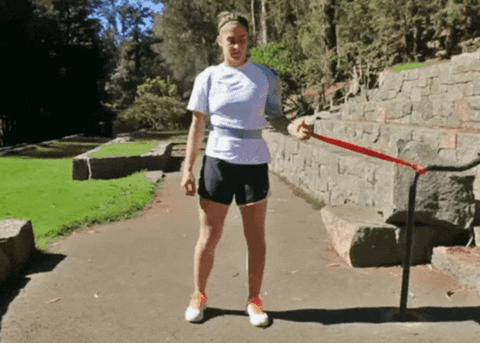WHAT IS SWIMMER’S SHOULDER

For those unaware of or unfamiliar with the condition, Swimmer’s Shoulder is a repetitive motion injury occurring in the shoulder joint. As your shoulder tendons and muscles keep going through the same motions and stressors without proper rest, they develop tiny tears. And due to these tears, the tissues inflame. Once this happens, you might experience:
- Muscle weakness and fatigue around the shoulder and arm
- Stiffness and reduced range of motion in the joint
- Instability
- And a radiating pain that may shoot through the back of your shoulder.
Usually, the tissues affected will be the rotator cuff muscles, which include the supraspinatus, infraspinatus, teres minor, and subscapularis. That’s because your rotator cuff stabilises your shoulder joint and allows your arm to rotate.
Despite the condition’s name, Swimmer's Shoulder is not limited to avid swimmers. In fact, even if you just swim for leisure or play Baseball, Cricket, or Volleyball, you could get it, too.
Learn more: Rotator Cuff Tear: Everything you need to know
WHAT YOU CAN DO TO AVOID IT
But fortunately, you can reduce your risk of developing the condition. On that note, let's get into the specific steps you can take.
PRACTISE PROPER POSITIONING

Put simply, the more frequently you repeat a movement in sports, the more important it is to get the motions right. When you're swimming, you need to mind your posture, how your hands enter the water, and how you pull yourself forward.
We can’t comment on your personal technique, but the recommendations from medical professionals and professional swimmers include:
- Keeping your spine in a neutral posture when swimming freestyle and backstroke
- When swimming freestyle, avoid thumb-first hand entry. That is, make sure your hand doesn’t go back into the water thumb-first.
- And also in freestyle, a wide-hand recovery will be much easier on your shoulder than one close to your body.
INVEST IN A SHOULDER BRACE
Bracing can also go a long way. Because even if you’re not feeling much discomfort in the joint, pulling on a shoulder brace after you swim can speed up muscle recovery, minimise delayed onset muscle soreness, and reduce the impact of repetitive stress on your soft tissues.
Our OmoTrain S Shoulder Brace, for example, does so by delivering targeted compression to the shoulder joint. Compression boosts blood flow in that area and reduces the production of edemas - your body’s inflammatory agents. You can also wear the brace while you swim, which will help support your tendons and muscles through rotations. You’ll also benefit from the compression knit activating key muscles, thus improving your proprioception (AKA positioning).
Learn more: #MindMatters - Improve your joint strength with increased mental proprioception
STRETCH
You should also add the following stretches into your exercise routine to improve the function of various swim muscles and improve mobility.
PECTORALIS STRECTH (THE DOORWAY OR STOP SIGN STRETCH)
This stretch will help relieve any stiffness in your extrinsic chest muscles and the subscapularis muscle in your rotator cuff.
- Stand in an open doorway.
- Raise your arms out to the sides, bending your elbows at 90-degree angles
- Rest your palms on the doorframe
- Slowly step forward with one foot, making sure you don’t lean forward.
- Hold the position for 30 seconds.
- Step back and relax your arms and shoulders
- Do 3 reps
THORACIC SPINE EXTENSION

You might remember this one from our article on Golfer’s Elbow exercises. Basically, thoracic extensions stretch the shoulders and thoracic spine, helping improve posture and mobility.
- Lay on your back on the floor with a foam roller placed horizontally between your shoulder blades
- Stretch your arms up and over your head and arch your back over the roll
- Inhale and return to centre.
- Repeat 8-10 times
LATS STRETCH
This exercise targets your lats, the muscles running from your waist to wrap around your shoulder.
- Stand sideways next to a wall.
- Extend the arm closest to the wall up and over your head, so it runs parallel to the wall.
- Lean inward and gently use the wall to pull your shoulder up into a deeper extension. Just imagine trying to press your armpit into the wall.
- Hold the stretch for 30 seconds, steadily increasing the stretch as your lats relax.
- Repeat for both sides
- Pay attention to your comfort levels, and do not force the stretch. You should only feel a gentle stretch through the side of your ribcage, shoulder, upper back, and upper arm.
BUILD STRENGTH
Strengthening your rotator cuff and surrounding muscles will help stabilise the joint and reduce the impact of repetitive stress.
SERRATUS PUSH-UPS
This exercise will help you build strength in your serratus muscles, which play an important role in swimming (especially freestyle).
- Stand facing a wall, with your arms straight in front of you and your palms pressing into the wall
- Squeeze your shoulder blades together, then push yourself back, keeping your palms on the wall
- Lock your elbows throughout the movement
- Do 10-15 reps
INTERNAL ROTATIONS

This exercise improves your shoulder’s range of motion and strengthens your rotator cuff.
- Secure a resistance band to a pole or piece of furniture at a height just lower than your chest
- Put a rolled towel between your ribs and your elbow, using your elbow to hold it firmly in place
- While gripping the other end of the resistance band, rotate your arm at the elbow until your forearm crosses your body
- Do 10- 15 reps
- Repeat on both sides
EXTERNAL ROTATIONS
This exercise uses the same principles as internal rotations, except in the opposite direction. Instead of pulling the resistance band from the same side inward, you pull it from the opposite side outward.
- Do 10-15 reps
- Repeat on both sides
DON'T PUSH YOUR JOINTS TOO HARD.
On that note, you shouldn't push your shoulders too hard. If you’re just getting back into swimming after winter, start slow and work your way up. And no matter your swimming schedule, don’t ignore your body’s warning signs. We know it can be easy to ignore tolerable pain levels, especially when you’re in cold water and might not feel the full extent of it.
Just remember that the normal amount of pain you should be experiencing is zero. So even if your pain levels are still tolerable, we’d advise you to take it easy and see your physio.
TO SUM UP
Swimmer’s Shoulder is a common condition among swimmers and can cause an unpleasant array of symptoms. So, to avoid Swimmer’s Shoulder this summer, add some shoulder stretches and strengthening exercises into your routine, get a quality brace, practise proper techniques, and mind your shoulder’s warning signs.
See our shoulder supports: Shoulder Braces




















